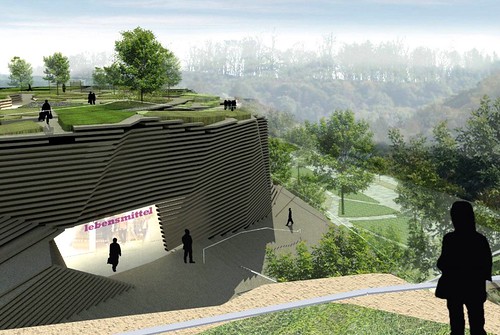Exemplary smart, green development will complement the historic character of medieval Weilburg

Posted October 28, 2009 at 12:27PM
Medieval cities are almost by definition models of smart growth: built a long time prior to the automobile age, and built to be self-reliant and defensible, they tend to be highly walkable, dense, and self-contained with many if not all the elements necessary for sustained living. But, as they grow and adapt to today's time and lifestyle (lest they become mere museum pieces), it has got to be immensely tricky to build there with appropriate sensitivity.
The baroque city of Weilburg, Germany, appears to have found a great answer. The city is not only tearing down an unsightly parking structure; it is also, as a result of a design competition, replacing the structure with a mixed-use project of homes and shops underneath green terraces that complement the city's historic castle gardens.
Writing in Inhabitat, Bridgette Meinhold reports:
"Weilburg, a medieval city not too far from Frankfurt, has announced plans to demolish a parking structure on the edge of its dense core and replace it with a mixed-use development with retail, residential and park space. Recently they revealed this beautiful proposal from ACME, which won the all-important public vote and second place from the professional jury. Inspired by the nearby Baroque terraced-landscape design of the Weilburg Castle Gardens, the Rathaus Terraces will feature green roofs, as well as natural ventilation and daylighting.
"Located outside of the city center on a hillside above a ravine, the Rathaus Terraces form a sloping and terraced vegetated landscape meant to integrate with the surrounding hills. The 19,200 square meter project will contain large format retail oriented towards the city center to attract passersby. Residences and apartments will be dispersed throughout the development and additional parking spaces will be created. New pedestrian paths will criss-cross around the development and connect to the city center and public parks with views towards the city and surrounding landscape will serve as an important amenity to residents and visitors . . ."
Read Meinhold's article and see more images here. The images both here and in the article are from ACME, a London-based architecture, planning and design firm. There is more about this fascinating project in this article in Architecture Daily. It appears to be a model of smart development that is highly sensitive to its surroundings.

